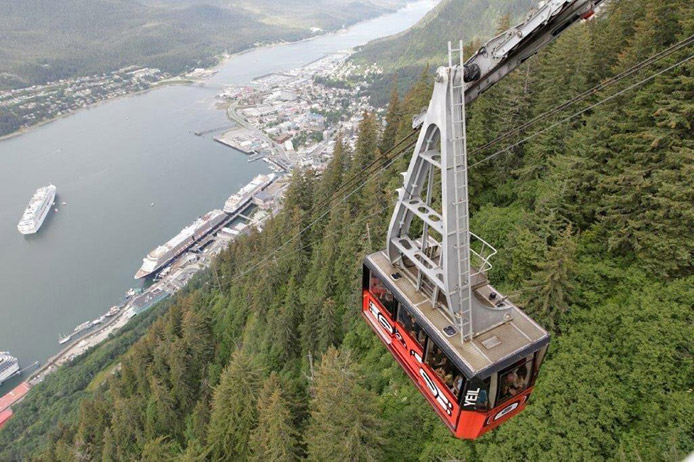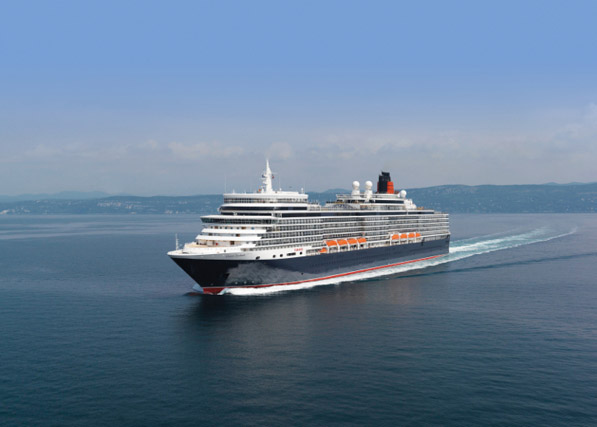
By Vanessa Orr
In a state in which tourism is a major economic driver, it’s not surprising that Alaska Native corporations would establish and operate their own visitor attractions.
What sets them apart — whether running lodges deep in Denali Park, operating the Kodiak Brown Bear Center in the Karluk Basin, or running a tram to the top of Mount Roberts in downtown Juneau — is their emphasis on culture in every aspect of what they do.
“One of the biggest advantages of our tourism products is the element of being Alaska Native-owned and – operated; we represent more than just summer tourism in Alaska,” says Marie Monroe, general manager for Kantishna Roadhouse, owned by Doyon Limited. “People staying with us want to learn more about our culture and to know that they are getting an authentic Alaska experience from an authentic Alaskan business.”
“Our heritage and history is at the forefront of everything that we do,” agrees Elliott Wimberly, president and CEO of Goldbelt Inc. “It is clear to visitors, our employees, and everyone who does business with us that we are an Alaska Native corporation.”
In most cases, tourism businesses choose their locations in places where they know people want to visit and where it is fairly easy to attract large numbers of customers. This is not always the case, however, when the destinations involve Alaska Native Claims Settlement Act (ANCSA) lands.
“Traditional marketing is all about location, location, location,” explains Jon Panamaroff, CEO of the Kodiak Brown Bear Center, owned by Koniag. “But because of where our land is located, we needed to create a marketing and business model that has visitors coming to us instead of us going to them.”
The Kodiak Brown Bear Center and Karluk River Cabins are located on 112,000 acres that Koniag owns in the middle of the Kodiak National Wildlife Refuge. Only accessible by helicopter or float plane, the location attracts about 120 people a year looking to stay at its high-end, luxury cabins.
“Alaska Native corporations are culturally and socially bound to take care of the lands that we received from our ancestors, and the beauty of the Karluk Basin and our tribal lands presented an opportunity,” Panamaroff says. “Our leadership chose to maintain and develop the land as a way to meet our responsibilities to our shareholders and community and to share it, and our culture, with the world.”
Incorporating culture
According to Panamaroff, the center’s success is a result of following Koniag’s six core values that direct all operations from the corporate to the subsidiary levels. “These fundamentals, like community strength and stewardship of natural resources – living eco-friendly and only utilizing the resources that we need – are good business practices as well as our cultural practices,” he says.
“Our culture is ingrained in us as a community and as a people,” he adds. “We strive to maintain our cultural relevance by using our art and language at our location; for example, there are Alutiiq words on all of the cabins, and the alphabet is on the walls. It’s built-in as an aesthetic but also serves to educate our visitors at the same time.”
Doyon has also succeeded in attracting visitors to its remote attractions, which include the Kantishna Roadhouse, located 90 miles inside Denali National Park. In addition to staying at the full-service backcountry lodge and cabins, tourists also have the option of taking a day trip on a private bus to tour the Kantishna mining district as part of the company’s Kantishna Wilderness Trails package.

“Back in 1995, our 13-member board decided to diversify from oil and other businesses — though we are still quite involved in those — because tourism at that time was becoming more vibrant in Alaska,” says Monroe. “We decided to get our toes wet by purchasing the Kantishna Roadhouse, which features 27 full-service cabins and a lodge.”
Doyon also owned Denali River Cabins for a time but sold it in 2013. “This was a very different, much larger venture at the entrance to Denali Park that included 102 rooms and a full-service restaurant and focused on overnight stays versus our minimum two-night stay at Kantishna,” says Monroe. “We decided that it was not the right genre for us, as we preferred the more remote, full-service lodge environment.”
Visitors to the roadhouse are given the opportunity to learn more about Native culture, which is one of the reasons that Monroe says they book their stay in the first place. “If people are seeking to learn about our culture, they will find it incorporated subtly in many ways,” she explains. “For example, on hikes we share the Native words for the plants we see. Native culture is reflected in the notebooks that we leave in the rooms, and on the names of buildings and in the products that we sell in our small gift shop. And because of shareholder hire, guests get to meet people who live in Alaska year-round.”
In the heart of downtown
Unlike Doyon and Koniag, Goldbelt’s major tourist attraction is located in the heart of downtown Juneau, where it is the most visible component of the company’s offerings.
The Mount Roberts tram is our marquee business in Juneau and has been an economic engine for Goldbelt and for the area for a long time,” says Wimberly. “We have seen increasing passenger traffic to the tram as a destination, as well as seen an increase in visitors from cruise ships.”
Goldbelt also operates the Seadrome Marina, catering to large pleasure boats that come in for provisioning and refueling, and offers seasonal work through Goldbelt Security, which provides crossing guards and physical security for local businesses. “While this is not viewed as a tourist activity, like the Mount Roberts Tram or the Seadrome, it is a necessary service that we provide to the city,” says Wimberly.
Tourism was a logical progression for Goldbelt, which started in the timber industry after receiving its ANCSA allocation of land. “After the initial timber harvest on Goldbelt land, tourism was the obvious solution as to what to do next,” Wimberly says. “We invested in the syndicate that established the tram and then bought out the other partners; we’ve successfully operated the tram for 22 years.
“Part of the reason for our success is that we offer a good product for a reasonable value,” he adds. “Tourists arrive and want a unique experience, and we take them from sea level to 1,800 feet above the city, where they have an amazing panoramic view. We also entertain them and educate them about our culture — first and foremost, our goal is to provide an accurate presentation of the history, culture and message of the Tlingit people in Southeast Alaska, and we have built the venue around that.”
“We incorporate Tlingit culture throughout their visit,” adds McHugh Pierre, vice president of operations for Goldbelt. “We have a greeter in regalia singing and dancing, and we share stories about Tlingit names and our language on the tram car. We have carvers and artisans at the top of tram, and we’re developing a totem park that will include two trail markers made by master craftsmen.” Goldbelt also encourages local craftspeople to display their work in the Raven Eagle Gift & Gallery onsite.
Because all of these tourism properties are privately owned, they don’t receive money from the state, so it’s important that they continually target local, national and international travelers. They do so mainly through social media and working with tourism organizations including the American Indian Alaska Native Tourism Association and the Alaska Travel Industry Association. In the case of the Kodiak Brown Bear Center, the company also works with photographers and film companies, like Nat Geo WILD, to publicize their offerings.
One of the draws of Alaska Native tourism operations is that they staff their attractions with the people who know the area and the culture best — Alaska Native shareholders and their descendants.
“We advertise almost exclusively through our parent company’s website, Doyon.com, to hire our employees,” says Monroe, adding that Doyon has a 30 percent to 40 percent shareholder-hire rate. “Our goal is to employ Alaskans — first our shareholders, then other Native company shareholders and then Alaska residents.”
Creating the next generation
Approximately 80 percent of the team at the Kodiak Brown Bear Center are Alutiiq and are shareholders of Koniag or other Alaska Native corporations. In addition to providing employment, Koniag also provides hundreds of scholarships to students to help them prepare for future careers, including in the tourism industry.
“Instead of having to find the next generation of leadership, we’re creating it,” says Panamaroff, who also serves as the president of the board of directors for the Koniag Educational Foundation. “We are working to develop leadership not just within the Native community but throughout the Alaska community. We hire Alaska Natives, but also native Alaskans as well.”
Goldbelt also places a priority on shareholder hire, with shareholders making up approximately 67 percent of its tourism employees.
“Our key management positions are year-round, which brings consistency to our delivery of services,” says Wimberly. “Our seasonal employees are made up of local folks and others who come into Juneau to take seasonal jobs in the summer, like college students with some link to Alaska. We put out the call early in the year and have staff orientation and training completed before the first passenger ever arrives.”
As many places around the world are experiencing an influx of tourists — some even closing destinations or limiting visitors due to overwhelming demand — Alaska Native tourism companies are watching and taking note.
“When dealing with the impact of increased tourist volume in Southeast, you have to weigh the risk versus the reward,” says Wimberly. “The season is only 150 days, so an investment in that kind of opportunity needs to show a return quickly
“But these are good challenges,” he adds, noting the introduction of the first Panamax ship last year, which is increasing passenger volumes. “We’ve made changes in the tram venue to accommodate larger crowds.”
Because of their remote locations, neither Doyon nor Koniag is worried about being overrun by tourists, but they are staying abreast of current trends and adjusting course as needed.
“While the roadhouse continues to hum along, changes to the board and the economy have led us to diversify into government contracts, so for now, tourism is taking a back burner,” says Monroe. “We’re not expanding at the moment because our primary focus is on building, leasing, and operating oil rigs, but if there’s a downturn in oil, we might branch out a little more.”
“Because our model is different, we’re not looking to have a high turnover in visitors; we’re focused on exclusivity,” says Panamaroff, adding that people will pay a premium to immerse themselves in this type of environment instead of a more commercialized venture. “We are very cognizant about the over utilization of our traditional lands, so we’ve created a unique, one-of-a-kind opportunity. We do not want to disturb the bears — we are their guests; they are not ours.”
The Kodiak Brown Bear Center is planning to build a 2,000-square-foot gathering room with a commercial kitchen that will allow them to strategically expand into hosting corporate retreats, youth camps and not-for-profit groups in the future, all the while continuing to focus on its core mission.
“As the economy struggles and the state faces a financial downturn, Native tourism corporations are pivotal when it comes to preserving our people, communities, lands and culture,” Panamaroff says. “These types of projects may have a smaller return on investment, but they provide jobs and sustain our villages, and this is something that our leadership takes very seriously. It’s not just nice corporate citizenship; it’s a requirement as Alutiiq people.”
Source: Alaska Business Monthly



